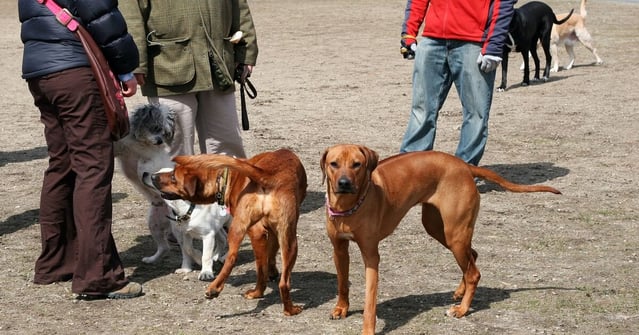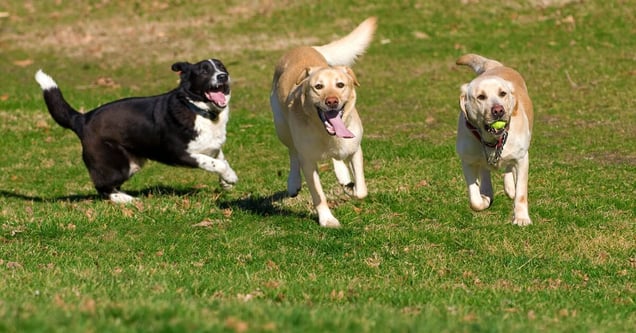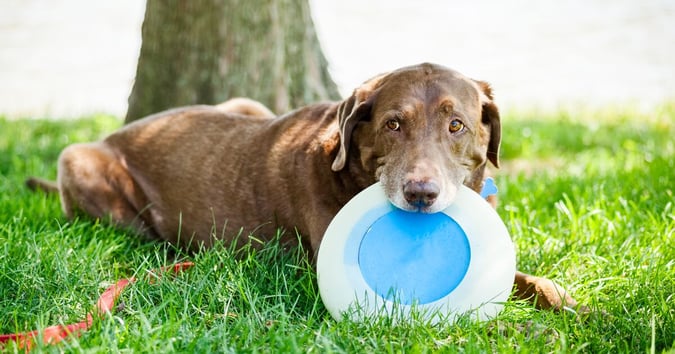Image a paradise where leads are kept at bay and a thousand opportunities await – welcome to the dog park, my two-legged friends! As an expert in all things chaseable and sniff-worthy, I’ll be acting as your furry guide while we explore the dos and don’ts of dog park etiquette. So, get those tails wagging and let’s get started!
What’s that? You don’t have a tail? Not to worry, just follow my lead and you’ll soon be navigating this pooch playground like a pro.
The Joy of Dog Parks
Dog parks are the ultimate play areas for us pooches. We can run, explore, sniff, and socialize to our heart’s content, all without being held back by a lead. And they’re not just about physical exercise, either. They offer a whole feast of smells, sights, and sounds, keeping our minds as active as our bodies!

Of course, to keep these areas fun and positive, there are a few dog park rules we could all do with keeping in mind. After all, no one wants to spoil a good time for everyone else!
Dog Park Rules: A Pooch’s Perspective
Dos:
- Cue Mastery: Before unleashing us in the park, it’s important to make sure we know how to respond to simple cues. A strong recall is vital, but remember, if you're trying to get our attention with all of the exciting distractions around, you'll need to be a positive and interesting point for us to come back to.
- Social Skills: Ensure we’re socialized with other dogs. Some parks even offer supervised sessions for younger dogs and puppies – a great way to help us learn polite play.
- Size Matters: Respect the small dog area. If we’re a tiny terrier or a gentle giant, it’s important to stick to our size-appropriate zones.
- Eagle Eyes: Keep watch over us. It’s easy to get distracted, but staying alert helps avoid mishaps like us eating something we shouldn’t or getting into a scuffle.
- Play Precautions: Bring a toy, but be mindful. If we’re possessive, it’s best to leave our favourite squeaky toy at home.
- Clean Up: Always carry poo bags. No one likes a messy park!
- Hydration Station: Bring water and a portable bowl to keep us hydrated. Running around and playing with other dogs is thirsty work!
- Park Research: Familiarize yourself with your local dog park’s rules, busy times, and layout. A well-timed visit makes for a more enjoyable experience.
- Energy Burn: A little pre-park exercise can help calm us down before we meet our friends.
- Non-Food Rewards: Consider praise or petting instead of food treats, otherwise you might find yourself attracting an unwanted canine crowd!
- Calming Aids: For nervous dogs such as myself, new dog parks can sometimes be a little overwhelming. Fortunately, I have my ADAPTIL Calm calming dog collar like to keep me relaxed. All the same, if you can see we’re not enjoying the park, it’s okay to give it a miss. There are a number of other great ways we can socialize and get in our physical and mental exercise!
- ID Check: Intentional or otherwise, us dogs can occasionally be a mischievous bunch. In fact, it’s not unheard of for one or two of us to escape our enclosed areas! So, think ahead and ensure our collars have up-to-date contact information.

Don’ts
- Health First: Don’t be tempted to bring us along to the dog park if we’re sick or aren’t up to date on all our vaccinations.
- Puppy Patience: Just as you shouldn’t rush us into our first walk, don’t rush young puppies into dog park life too soon. Puppies need time to learn appropriate play and social behaviours, and interacting with a variety of dogs can be overwhelming. Most behaviourists suggest waiting until pups are 6-8 months old before their first dog park adventure.
- Maturity Matters: Bringing unneutered males and females in heat is poor dog park etiquette. Their presence can be disruptive and lead to unexpected behaviours among the dog community.
- Lead leeway: Avoid keeping us on a lead inside the park as this can limit our natural interactions with other dogs – though you should still keep the lead in hand just in case! If your dog isn’t ready to be off lead, it may be best to try exercising us in a different place.
- Gate Awareness: Don’t be the one who let the dogs out. Close that gate!
- Respectful Greetings: Don’t let us crowd and potentially overwhelm any newcomers. Move us away from the entrance once we arrive.
- Monitor Play: Step in if play gets too rough or if we’re not enjoying ourselves.
- Treat Etiquette: Don’t feed other dogs without permission from their human parent.
- Take It Slow: With newly adopted dogs, allow time for adjustment before introducing us to a dog park.
- Watch for Signs: Understand our body language – wagging tail and relaxed ears mean we’re having fun, but tucked tails or hiding suggests discomfort.
- Voluntary Socializing: Don’t force us dogs to interact with others if we don’t feel like it. It’s best to let us explore and approach other dogs at our own pace and comfort level.
- Behavioural Awareness: If you spot us showing any behavioural issues, don’t simply ignore them. Dog parks may not be the best place for training so aim to address these behaviours in a different environment.

Dog Parks Aren’t for Everyone!
It pays to remember that every one of us dogs is unique. Some of us love the hustle and bustle of a dog park while others simply prefer a quiet walk. The key is to find what makes our tails wag the most!
Watch out to see if we’re happy or are socializing comfortably with other dogs. If we just seem a little nervous, don’t forget that calming coats for dogs and calming dog collars can both work wonders. My human never takes me outdoors without my ADAPTIL Calm Collar! On the other hand, it’s absolutely fine to say no to the dog park altogether. There are plenty of great alternatives available like a walk or hike somewhere we prefer.
On that note, speaking to a local professional dog trainer or qualified animal behaviourist can also be helpful. They’ll make sure our basic skills are in top form and can let you know whether our temperament is suitable for a dog park.
So, there you have it, friends – a complete guide to dog park rules and etiquette. Keep these tips in mind for all your adventures to come!
Are you looking for more advice on caring for your dog or searching for ideas when taking dogs on grand days out? Don’t hesitate to get in touch! We love hearing all about your doggy adventures and enjoy sharing all the tips we can. And while we’re at it, you can also stay informed with our latest tips, guides, and product information by signing up to our newsletter.


